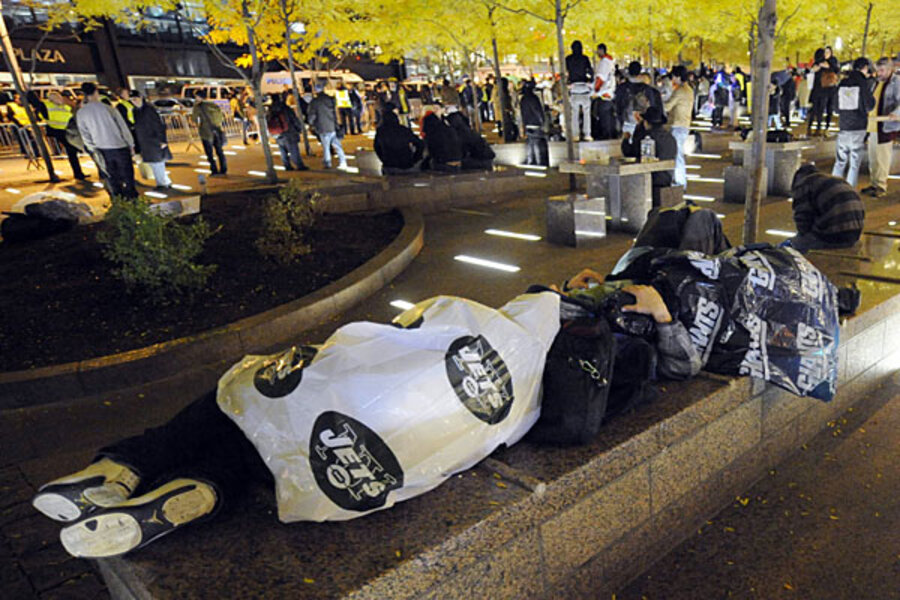Zuccotti Park ruling got it right, say experts (VIDEO)
Loading...
The eviction of Occupy Wall Street demonstrators in Manhattan was a dramatic turn in a nearly two-month standoff, inspiring howls of protest from the protesters and their supporters. But New York and other cities that have cracked down appear to have the law — and history — on their side.
A judge upheld New York's decision to clear Zuccotti Park. And even some experts known as supporters of First Amendment rights said the judge had it right.
"The short legal answer to these situations in New York City and other places today is that there are broad rights to protests, to march, to demonstrate and to be heard," said Floyd Abrams, a prominent First Amendment lawyer. "There is no right to occupy a public area on a full-time basis, including housing facilities and sleeping there."
Abrams said the protesters, by successfully bringing public attention to their message of corporate greed and economic inequality, have exercised their First Amendment rights. "What they can't do is go over the line in what is essentially a seizure by them of public property .... with no limitations."
Not everyone agrees. The American Civil Liberties Union has filed lawsuits — and in some instances, won temporary restraining orders — on behalf of Occupy activists in such places as Nashville, Oakland, Calif., and Trenton, N.J.
[ Video is no longer available. ]
"There is no such thing as a beginning, middle and end to free speech rights," said ACLU executive director Anthony Romero. "The right ... doesn't toll after a certain time period."
Romero also said it's hypocritical to try to limit the duration of protests "when we celebrate the occupation of Tahrir Square (the site of anti-government protests in Cairo). Certainly no one was citing the Egyptians for their overnight, multi-day protests. We ought not to criticize the Occupy movement for demonstrating their points of view with similar zeal."
The judge's decision Tuesday was the latest development in a growing national drama that began when a community of bed rolls and tents sprang to life in a park near Wall Street nearly two months ago. The movement has spread across the country, and taken with it a tangle of legal, constitutional and public relations problems for city officials.
In his ruling, New York state Supreme Court Justice Michael Stallman said protesters "have not demonstrated that they have a First Amendment right" to remain in the park, with their sleeping gear "to the exclusion of the owner's reasonable rights ... or to the rights to public access of others who might wish to use the space safely."
On Tuesday night, protesters were allowed to return — but without tents or sleeping bags.
New York was not the first city to crack down on the protests. On Monday in Oakland — the site of previous violence — police armed with tear gas emptied out that city's site. And authorities in Portland, Ore., have roused protesters, shut down a camp there and made more than 50 arrests amid complaints of drug use and sanitation problems.
The Occupy movement is the latest in a long series of protests that have played out in the public arena and tested constitutional limits, says Timothy Zick, a professor of law at William & Mary Law School and author of "Speech Out of Doors: Preserving First Amendment Liberties in Public Places." ''What the occupiers are doing is quite firmly rooted in our history and our culture," he said.
But Zick said it wasn't until the 1960s — the era of civil rights demonstrations — that the courts "began to recognize the power of public protests to create breathing space," such as parks and other public places to exercise First Amendments rights. "That's what the occupiers are taking advantage of."
Though the Constitution provides some protections for protesters, they're not absolute, added Zick. He said, for example, the U.S. Supreme Court has ruled that authorities can prohibit overnight campaigning at the National Mall and Lafayette Park in Washington.
Other restrictions are common, such as limits on when protests may occur.
"That keeps someone from protesting at 2 a.m. outside your bedroom window for something they can say at noon," said Gene Policinski, executive director of the First Amendment Center, a nonprofit educational center in Nashville.
There also are restrictions in many places, such as requiring permits to march, assemble and speak, Zick said.
"Governments have the authority and the power to regulate things for public safety, traffic flow, sanitation," Zick added. "None of these things have anything to do directly with freedom of speech. They regulate time of day, place and manner. You can limit the size of a protest ... you can't protest in the middle of Times Square whenever you like. There are a lot officials can do and a lot they do to regulate public protests."
He also said there are legitimate concerns about violence breaking out in protests such as the anti-Wall Street demonstrations, such as those that occurred in Oakland.
"It's a delicate balance," he said. "It's a difficult question that has to be decided locality by locality. But I think the calculus in some places has been 'enough is enough.'"





